Gaming monitors come in various shapes, sizes, resolutions, aspect ratios, and panel types. One category that has seen an explosion in popularity in recent years is the ultrawide category, with the most popular resolution being Wide Quad High-Definition (WQHD). While traditional 16:9 aspect ratio QHD monitors have a 2560 x 1440 resolution, UWQHD stretches the resolution horizontally all the way to 3440 x 1440 (21:9 aspect ratio). There are even some superwide monitors available, like thePhilips Evnia 49M2C8900, taking the Double Quad High-Definition (DQHD) moniker, delivering a 5120 x 1440 resolution (32:9 aspect ratio).
Most of the monitors are curved, giving these wide panels a more immersive viewing experience. They use varying technologies, ranging fromVAtoQLEDtoOLED. You’ll find many monitors in the 34-inch size class, although some behemoths can measure up to 49 inches across for those with more desk real estate.
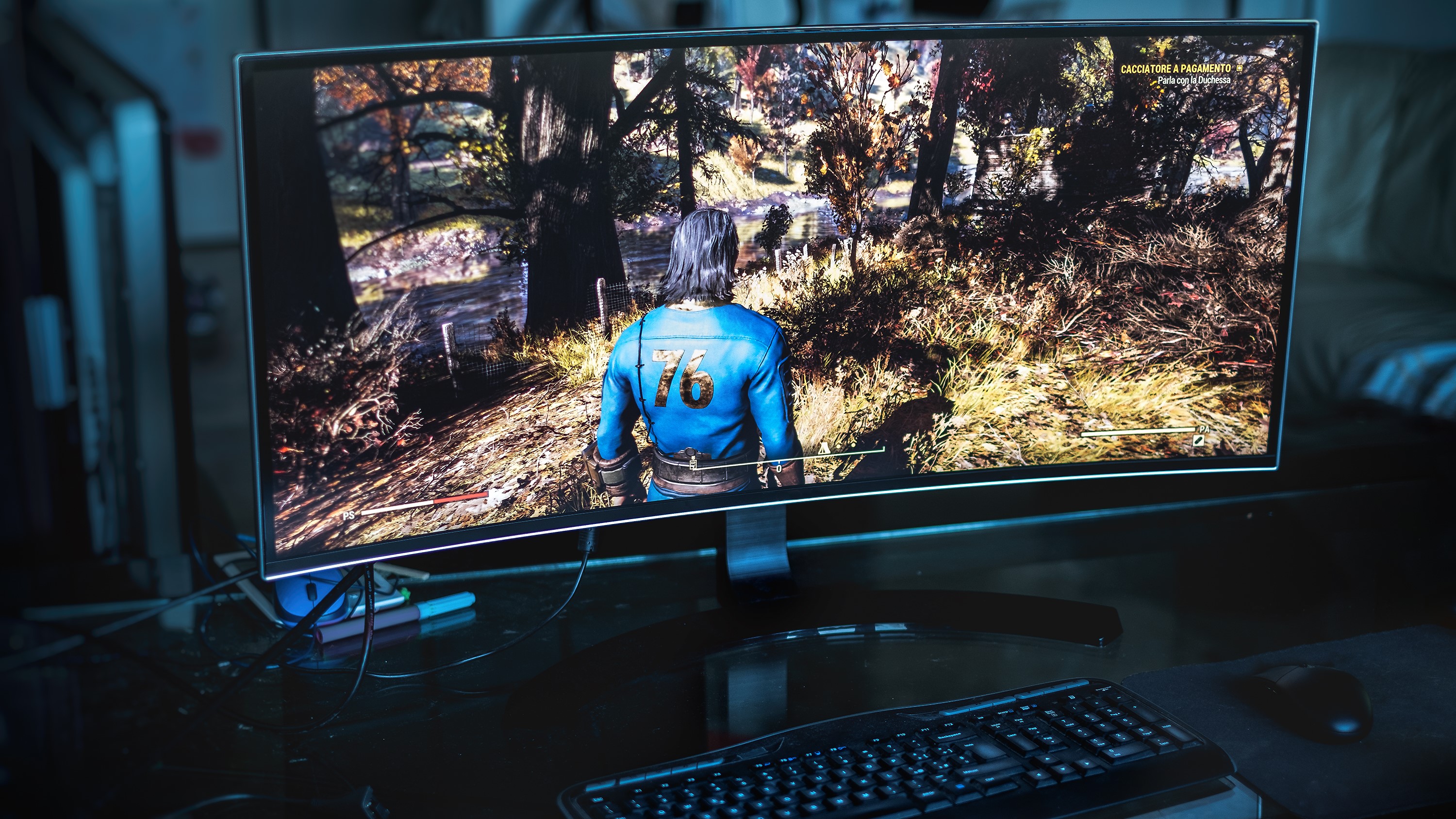
Below is a list of the best ultrawide gaming monitors currently available based on our in-depth testing and reviews. If you’re looking for a more traditional aspect ratio, check out our lists of thebest gaming monitorsandbest 4K gaming monitors.
3440 x 1440
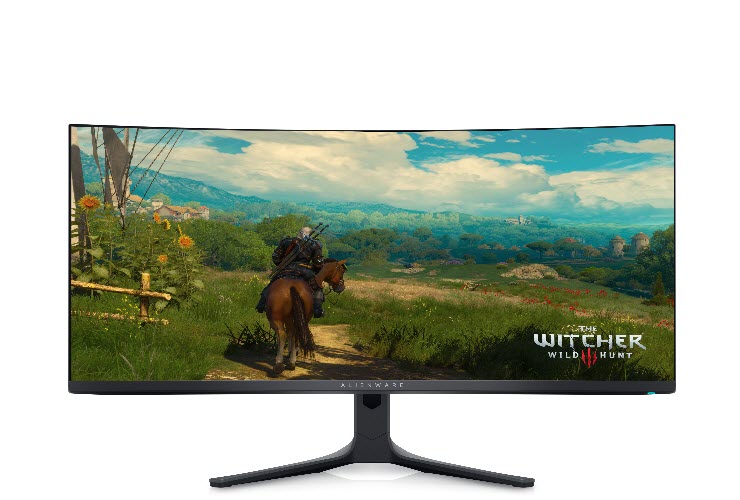
21:9
3840 x 1600
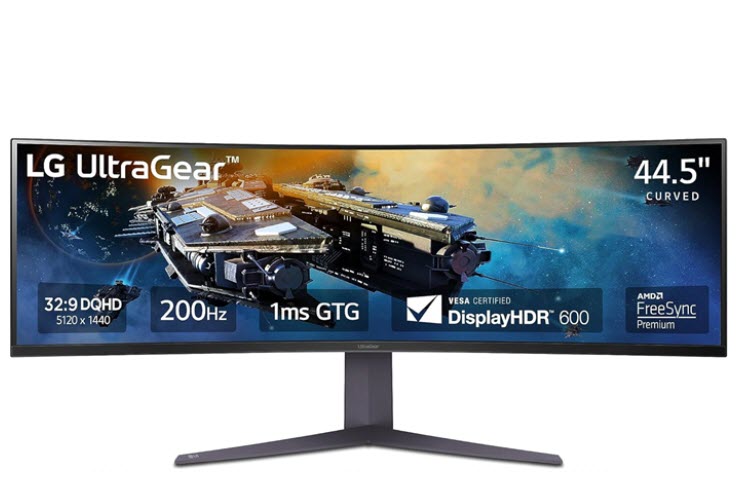
5120 x 1440
32:9
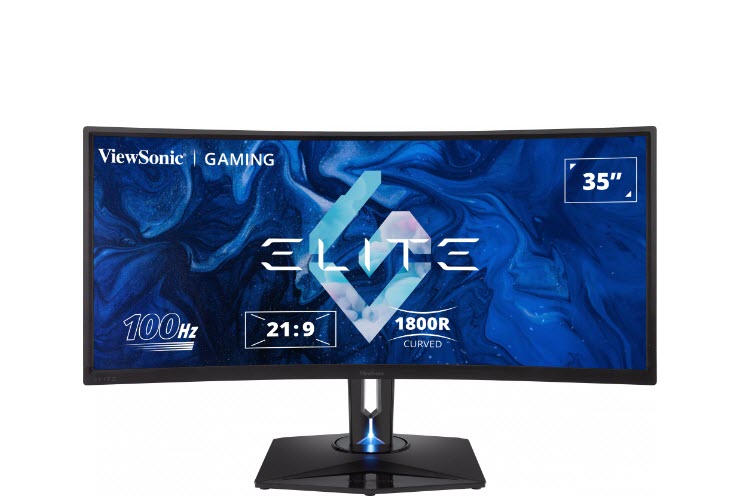
5120 x 2160
Best Overall
Best Overall Ultrawide Gaming MonitorThis ultrawide does almost everything well and has the added bonus of a vibrant QD-OLED panel with a large color gamut. With a UWQHD resolution, 165 Hz refresh rate and excellent build quality, it is an excellent companion for productivity and gaming tasks.
Read more below
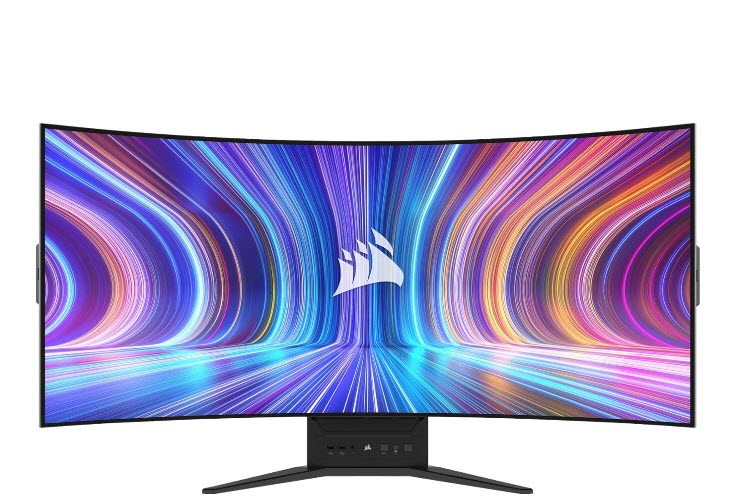
Best 200Hz
Best 200Hz Ultrawide Gaming MonitorThe LG UltraGear 45GR75DC is a 45-inch class ultrawide monitor with a DQHD resolution, VA panel, and a 200Hz refresh rate. The gaming monitor impresses with its bright panel and accurate colors and is a top pick for enthusiasts looking for an immersive gaming experience.
Best Budget
Best Budget Ultrawide Gaming MonitorUltrawides don’t always have to break the bank, and that’s where the ViewSonic Elite XG350R-C comes into the picture. It offers a UWQHD resolution, 100 Hz refresh rate, and offers 35 inches of screen real estate. While its specs won’t wow hardcore enthusiasts, it’s perfectly suited for entry-level gamers.
Best Bendable
Best Bendable Ultrawide Gaming MonitorThe Corsair Xeneon Flex offers a wild take on gaming monitors, allowing you to adjust the curvature manually to your liking. Whether you like a curved or flat display, the Xeneon Flex has you covered.
Best Mini LED
Best Ultrawide Mini LED Gaming MonitorThe ViewSonic Elite XG341C-2K combines a VA panel and a Mini-LED backlight with 1,152 dimming zones. The use of VA technology gives it a 3,000:1 native contrast ratio before even taking into account the local dimming. You can also crank the refresh rate to 200 Hz (when overclocked) and can hit a maximum of 1,400 nits brightness in HDR mode.
Best Under $500
Best Budget Ultrawide Gaming Monitor Under $500The Gigabyte GS34WQC is a no-frills 34-inch 3440 x 1440 gaming monitor that is light on features but big on performance. Its VA panel delivers excellent contrast, while color is accurate out-of-the-box. And it does it all with a street price of around $280.
Best Mega-Ultrawide Gaming Monitor
The Philips Evnia 49M2C8900 is a massive monitor with massive appeal, thanks to its brilliant OLED panel, which delivers crisp, colorful, and accurate images straight from the factory. It even includes a remote control and a surprisingly good four-speaker audio system, but be warned that it will set you back $1,499.
Best Ultrawide Gaming Monitors in 2025
Why you may trust Tom’s HardwareOur expert reviewers spend hours testing and comparing products and services so you can choose the best for you.Find out more about how we test.
Reasons to buy
Reasons to avoid
The AW3423DFW is a 34-inch ultra-wide monitor with a 3440 x 1440 resolution and an 1800R curvature. But the spec that is most likely to garner the most attention (and praise) is the Quantum Dot OLED (QD-OLED) panel. As a result, you can expect ink blacks and rich colors across the board.
The build quality is excellent– an Alienware hallmark – as is the video processing, which is sure to be a big hit with gamers.
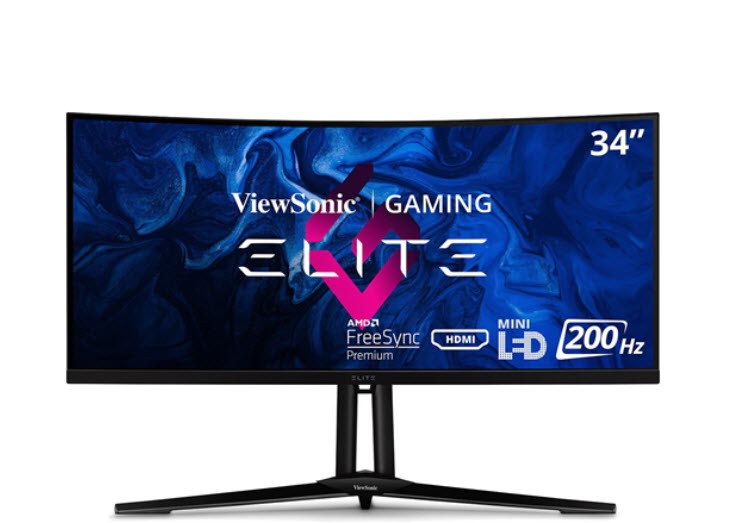
The AW3423DFW doesn’t come cheap with a street price of over $1,000, but if you own aGeForce RTX 4090orRTX 4080,you owe it to yourself to try matching it with a widescreen display of this caliber.
The UltraGear 45GR75DC stands out from the pack thanks to its Double QHD or DQHD resolution, fast refresh rate (200Hz), excellent contrast via its VA panel, and brightness levels top the competition. In addition, theLGhas infused the monitor with excellent build quality that we expect in this class.
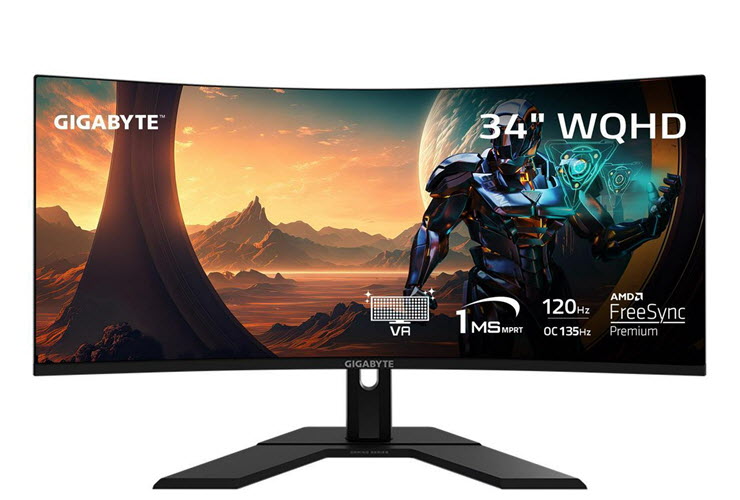
The UtraGear 45GR75DC is definitely not aimed at budget gamers thanks to its street price of around $900. But you’re still getting a lot of bang for the buck with this 45-inch behemoth. Just make sure that you have the desktop real estate to handle it.
Currently going for$660, the ViewSonic Elite XG350R-C is cheaper than many other 35-inch ultrawides and those with fewer features (there’s even RGB lighting on the back of the XG350R-C). But what you’ll really love about the XG350R-C is its vivid and accurate color that makes textures pop, skin tones look natural, and everything looks more realistic.

If you want life-changing HDR or to use HDR with Adaptive-Sync, look elsewhere. But in addition to a 21:9 aspect ratio, the Elite XG350R-C employs an 1800mm curve radius that engulfed us with solid image quality, making for an immersive ultrawide experience.
The Corsair Xeneon Flex is a unique offering in the premium gaming monitor segment. It features a bendable OLED panel that can convert from a flat panel to one with an 800R curve using two handles that spring out from the sides of the chassis. This arrangement gives the Xeneon Flex the best of both worlds when it comes to panel types.
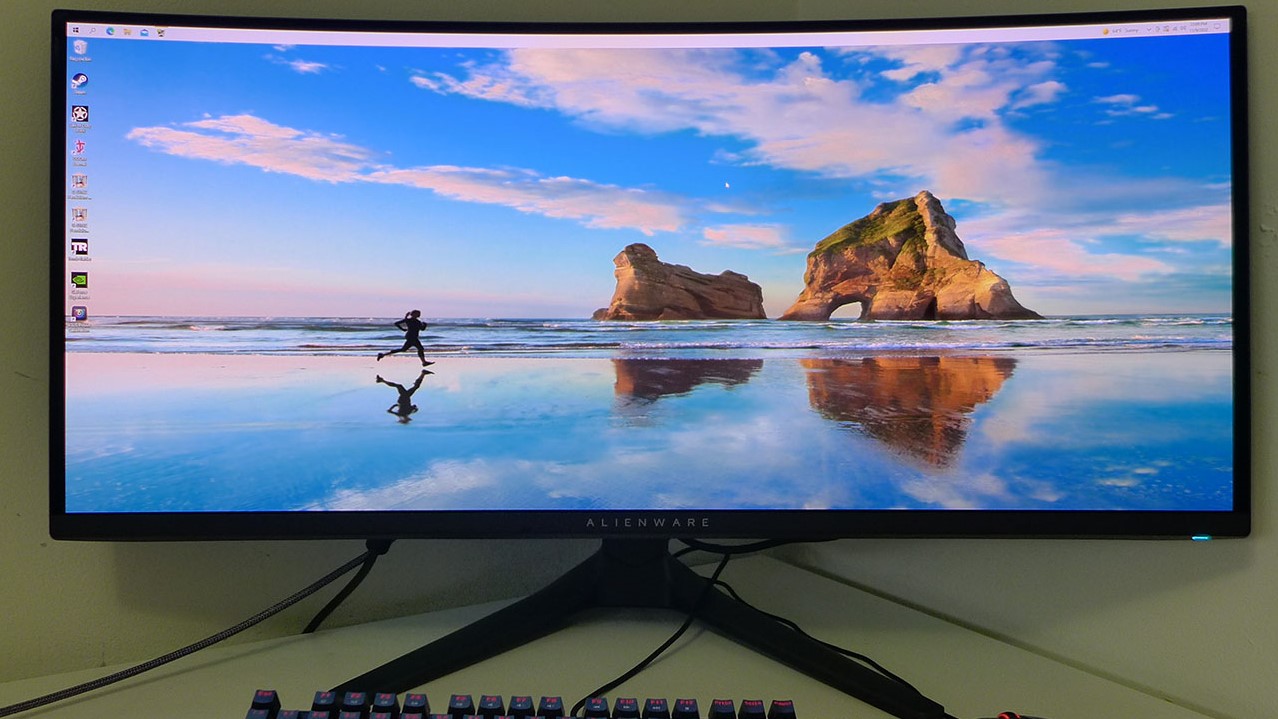
In addition to the excellent contrast and color that come with using an OLED panel, the monitor also features a fast 240Hz refresh rate. You’ll also find support for AMD FreeSync and Nvidia G-Sync.
However, we must mention that the 3440 x 1440 resolution isn’t exactly the best with a panel this large (45 inches). So pixel density suffers, and we would have liked to have seen better HDR performance.
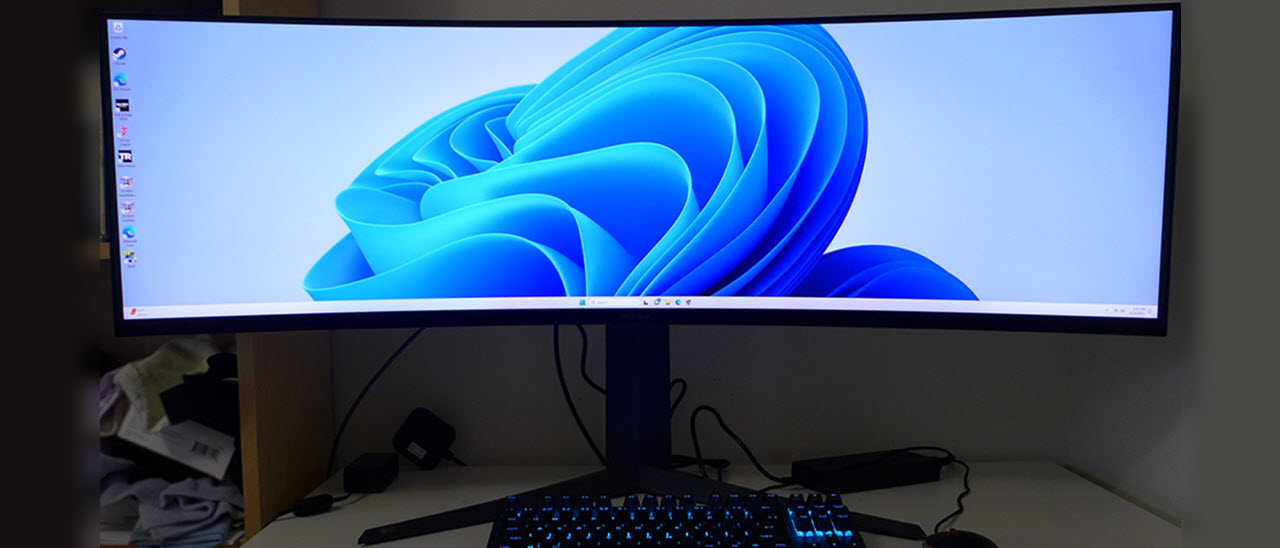
With that said, the novelty of the “transforming” display might be worth Xeneon Flex’s $1,700 street price if you’re looking for an attention-getting centerpiece for your gaming PC setup.
The ViewSonic Elite XG341C-2K ticks a lot of the right boxes when it comes to gaming monitors. Not only does it have a 3440 x 1440 resolution with a native 165 Hz refresh rate, but it can also be overclocked to 200 Hz. It is both AMD FreeSync (to 165 Hz) and Nvidia G-Sync compliant and has good build quality.
However, the Elite XG341C-2K stands out with its VA panel with Mini LED backlighting. This gives the monitor rich colors out of the box, incredible contrast (which we would expect from a VA panel), and an eye-searing maximum HDR brightness of 1,400 nits. And thanks to Mini LED backlighting, the Elite XG341C-2K has 1,152 dimming zones versus the fewer than 400 that we typically see with a FALD panel.
There are a couple of gotchas, though, regarding the Elite XG341C-2K. For example, brightness controls are locked on when using Active-Sync, and Active-Sync can’t be enabled at all when taking advantage of the overclocked 200 Hz refresh rate. However, if those are manageable for your gaming priorities, the Acer Elite XG341C-2K is an excellent choice for ultrawide gaming monitors in the under $1,500 price segment.
If you’re in the market for a bang for your buck value in the gaming monitor market, the Gigabyte GS34WQC is definitely worthy of your consideration. Let’s get this out of the way first: you’re not going to find an OLED or IPS panel, and you certainly won’t get Mini LED backlighting. However, you get a 34-inch VA panel with a 3440 x 1440 resolution and a native refresh rate of 120 Hz (overclockable to 135 Hz).
As is the case with most gaming monitors released these days, you get AMD FreeSync and Nvidia G-Sync support, and it is compliant with displaying HDR10 content. You get a 1500R curve, and the port allotment is decent (two HDMI 2.0 and one DisplayPort 1.4).
Thanks to its VA panel, contrast is excellent (we measured 3,781:1), overall color accuracy was excellent, and calibration was honed in from the factory. However, you won’t find superfluous features like LED lighting, and you won’t even find USB ports for your peripherals or built-in speakers. However, you get a sub-$300 price tag, which is a key selling point for budget-conscious gamers.
With OLED panels invading every facet of the gaming monitor sector, it should be no surprise that they pop up in even the largest offerings. That’s definitely the case with the Philips Evnia 49M2C8900, which has a massive OLED panel stretching an impressive 48 inches. So what do you get with your $1,500 investment into widescreen gaming bliss?
Well, for starters, you get a resolution of 5120 x 1440 and a maximum refresh rate of 240 Hz, which is impressive for an OLED panel of this size. Philips lists the response time as an OLED-typical 0.03 ms, and you get a maximum brightness of 450 nits in HDR mode (250 nits in SDR). Regarding connectivity, you’ll find two HDMI 2.1 ports, one each for DisplayPort 1.4 and USB-C. In addition to a 3.5 mm headphone jack, Philips gives you four surprisingly good-sounding 7.5-watt speakers with DTS tuning.
The end result is a monitor that provides accurate color without the need for calibration out of the box. Video processing is also top-notch, and you even get a remote for controlling the Evnia 49M2C8900 all the way across a room (for when you want to use it as a large-screen TV for watching movies and TV shows).
No product is completely perfect, and the Evnia 49M2C8900 is let down by some crushed details when viewing HDR content. We can’t forget the $1,499 asking price, which is likely above the budget of many enthusiasts. However, it’s hard to scoff at that price if you have the budget (and desk space) to accommodate this impressive OLED beast.
More:Philips Evnia 49M2C8900 Review
Shopping Tips for Gaming Monitors
When trying to buy the best gaming monitor for your PC, consider the following:
MORE:How to Buy a PC Monitor
MORE:How to Choose the Best HDR Monitor
Get Tom’s Hardware’s best news and in-depth reviews, straight to your inbox.
Brandon Hill is a senior editor at Tom’s Hardware. He has written about PC and Mac tech since the late 1990s with bylines at AnandTech, DailyTech, and Hot Hardware. When he is not consuming copious amounts of tech news, he can be found enjoying the NC mountains or the beach with his wife and two sons.